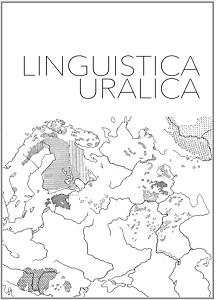Self-quotative Markers in Permic and Hungarian
Self-quotative Markers in Permic and Hungarian
Author(s): Denys TeptiukSubject(s): Morphology, Finno-Ugrian studies
Published by: Teaduste Akadeemia Kirjastus
Keywords: Komi; Udmurt; Hungarian; self-quotative markers; self-quotations; reported discourse;
Summary/Abstract: In this paper, I discuss the use of self-quotative markers in new media texts in two Permic languages, Komi and Udmurt, and in the more distantly related Hungarian. I focus on the use of the grammaticalized self-quotative particles (Komi мися, Udmurt пöй) in Permic, and the lexical self-quotative markers mondom ’I say (it)’ and mondok ’I say’ in Hungarian. I look at their use with different types of reported discourse — quotations of speech and thought, intended discourse, purpose reports, expression of the reporter’s current stance, and mimetic expressions. By contrasting lexical and grammaticalized elements, I show how their morphosyntactic status and structural use allow them, on the one hand, to frame different types of reported discourse or, on the other hand, restrict them to particular types only.
Journal: Linguistica Uralica
- Issue Year: LVII/2021
- Issue No: 3
- Page Range: 213-232
- Page Count: 20
- Language: English

